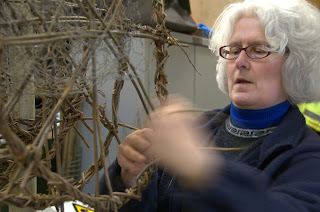By Helen Roberts
The green roof industry has been aided over the past few years by an unlikely character. The black redstart (Phoenicurus ochruros), a robin-sized bird of strange habits, has not only helped draw attention to the green roof industry, it has advanced development of green roof design.
The black redstart is unusual in its call, looks and ecological preferences. Its song starts with a hurried warble followed by a sound similar to that of scrunching of a bag of marbles. Males have a fiery red tail and the species has a propensity to hang out in industrial places.
Within the urban environment, brownfield sites can be rich in biodiversity and can be lost when they are developed. The story of the black redstart is inextricably linked to that of humans and urban centres. Black redstart population numbers have fluctuated in the urban environment due to human activity, and this is where the story of the black redstart has impacted the green roof industry in a positive way.
During and after the Second World War the black redstart population soared because bombsites provided a habitat that closely replicated their preferred habitat found on the scree slopes of the Alps. With redevelopment of areas of London, however, populations declined. Other cities also saw a drop in numbers as a result of development.
 |
| Laban Dance Centre in London. Credit: rucativava, CC-BY-SA-2.0, via Wikimedia Commons |
Deptford Creek in London, an area that was earmarked for development, was important for its populations of black redstarts. The developers were pushed by wildlife groups to provide suitable habitat for the birds through the implementation of green roofs. This truly innovative solution to mitigate the decline in black restart populations led to the development of green roofs designed specifically for black redstarts. The rubbleroof of the Laban Dance Centre in London, installed in 2000, was the first of these in the UK. Rubble roofs, such as the Laban Dance Centre’s, replicate the features of a brownfield site and often incorporate materials from the original site. They have a mix of aggregate materials such as crushed brick and concrete, stones and boulders. The Laban Dance Centre roof also incorporates features such as logs and sand boxes in order to study nesting bees. It has been monitored since 2002 and a number of rare invertebrates have been recordedusing the habitat.
Numerous studies have shown that green roofs help support several Red Data book invertebrates and UK Biodiversity Action Plan species such as the brown-banded carder bee (Bombus humilis) and the nationally scarce Bombardier beetle (Brachinus crepitans) and that these green roof conditions can be replicated at other sites.
The right plants for the right roof
Incorporating the right plant species in to the design of a green roof is important for achieving biodiversity objectives. Simple sedum matting has been shown to have little ecological benefit for invertebrates, though they do provide sources of food for foraging bees in summer.
A truly exemplar green roof that is rich in plant species is the Moos Filtration Plant in Zurich, which cleans all the water for the inhabitants of Zurich. Yet, this green roof came about by chance as there was no original intention to create a green roof as part of the building design. When the filtration plant was built, the multiple roofs were covered in exposed waterproofing which subsequently caused the water below the roof deck to become polluted with bacteria due to high temperatures during the first summer. In order to moderate the temperature of the roofs, a 5cm sand and gravel layer was laid down followed by a layer 15-20cm deep of local meadow topsoil. This soil was teeming with flower and grass seed and it became a flourishing 30,000m2 meadow. Today these expansive roofs provide habitat for 175 species of plants, many of which are rare and endangered at a local and national level, including 14 species of orchid. The roofs now have special protection under Swiss nature conservation laws.
Due to the pressures of habitat loss through urbanisation, it is becoming increasingly important for biodiversity to be retained. If land is lost at the ground level through building, then green roofs help provide stepping stones above for wildlife and can provide valuable habitat for flora and fauna that would not ever be found on a conventional roof.






